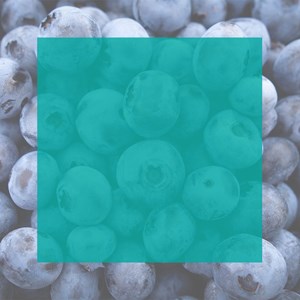
Mineral supplements are labelled as “natural”, but the calcium in an oyster shell is natural - it doesn’t mean we should eat it!
What are your mineral supplements made of? Don’t be fooled just because they are labelled as “Natural”. 99% of mineral supplements are made from inorganic mineral salts – in effect miniature rocks. We need minerals in their food (foodstate) form, not their rock form.
A Complete Food Chain:
- A plant extracts mineral salts from the soil and turns them in to food minerals by adding proteins and other food elements, we eat the plant and get the benefit
An Incomplete Food Chain:
- A mineral salt is chemically bound to an acid and called a “natural” mineral supplement. It has no association with food at all
What is wrong with this? We are not designed to eat rocks!
How do we choose the right mineral supplements?
Always choose food (foodstate) minerals. Ignore what is written on the front of the label, read the ingredients list on the back and look for words ending in “ate” like carbonate, gluconate, picolinate, orotate, sulphate, etc. These are the acids bound to the mineral salt.
What’s missing from these Mineral Salts?
All the good bits. A nutrient needs its food elements to be properly absorbed, used and retained by the body.
Your Challenge:
Go in to a health food store and try to find a Mineral Supplement that is not made from inorganic rocks. And if you are not convinced that we should only eat food (foodstate) minerals, here are a few alternative uses for these so-called “natural” mineral salts:
- Calcium carbonate is the rock known as limestone or chalk and is used in the manufacture of paint, rubber, plastics, ceramics, putty, polishes, insecticides, and inks.
- Chromium picolinate is chromium III processed with picolinic acid. Picolinic acid is used in herbicides.
- Copper gluconate is copper carbonate processed with gluconic acid. It is used as a deodorant [19].
- Magnesium chloride is magnesium ammonium chloride processed with hydrochloric acid. It fireproofs wood, carbonizes wool, and is used as a glue additive and cement ingredient.
- Manganese carbonate is the rock known as rhodochrosite. It is used as a whitener and to dry varnish.
- Potassium chloride is a crystalline substance consisting of potassium and chlorine. It is used in photography.
- Seleniomethionine is a selenium analog of methionine. It is used as a radioactive imaging agent.
- Zinc sulphate can be a rock processed with sulphuric acid. It is used as a corrosive in calico-printing and to preserve wood [15].
Do you still want to put these Mineral Supplements in your body?
How do Foodstate Minerals Differ?
We take these inorganic minerals and put them through a growth process that copies exactly the function of the plant, changing an inorganic mineral salt in to a fully-formed food mineral with all the food elements added. They are created in appropriate dosages and recognised by the body as food minerals, providing an essential concentrated form of these essential nutrients at a time when the farm soils are desperately deplete.
Conclusion: No matter how many industrially produced mineral supplements one takes orally, they will:
1) Never be a truly complete nutrient source.
2) Never replace all the functions of food minerals.
3) Always be unnatural substances to the body.
4) Always strain the body by requiring that it detoxify or somehow dispose of their unnatural structures/chemicals.
5) Never be utilized, absorbed, and retained the same as food nutrients.
6) Never be able to have the antioxidant effects of food nutrients.
7) Always be industrial products.
8) Always be composed of petroleum-derivatives, hydrogenated sugars, acids, and/or industrially-processed rocks.
9) Never build optimal health in the same way as food nutrients.





